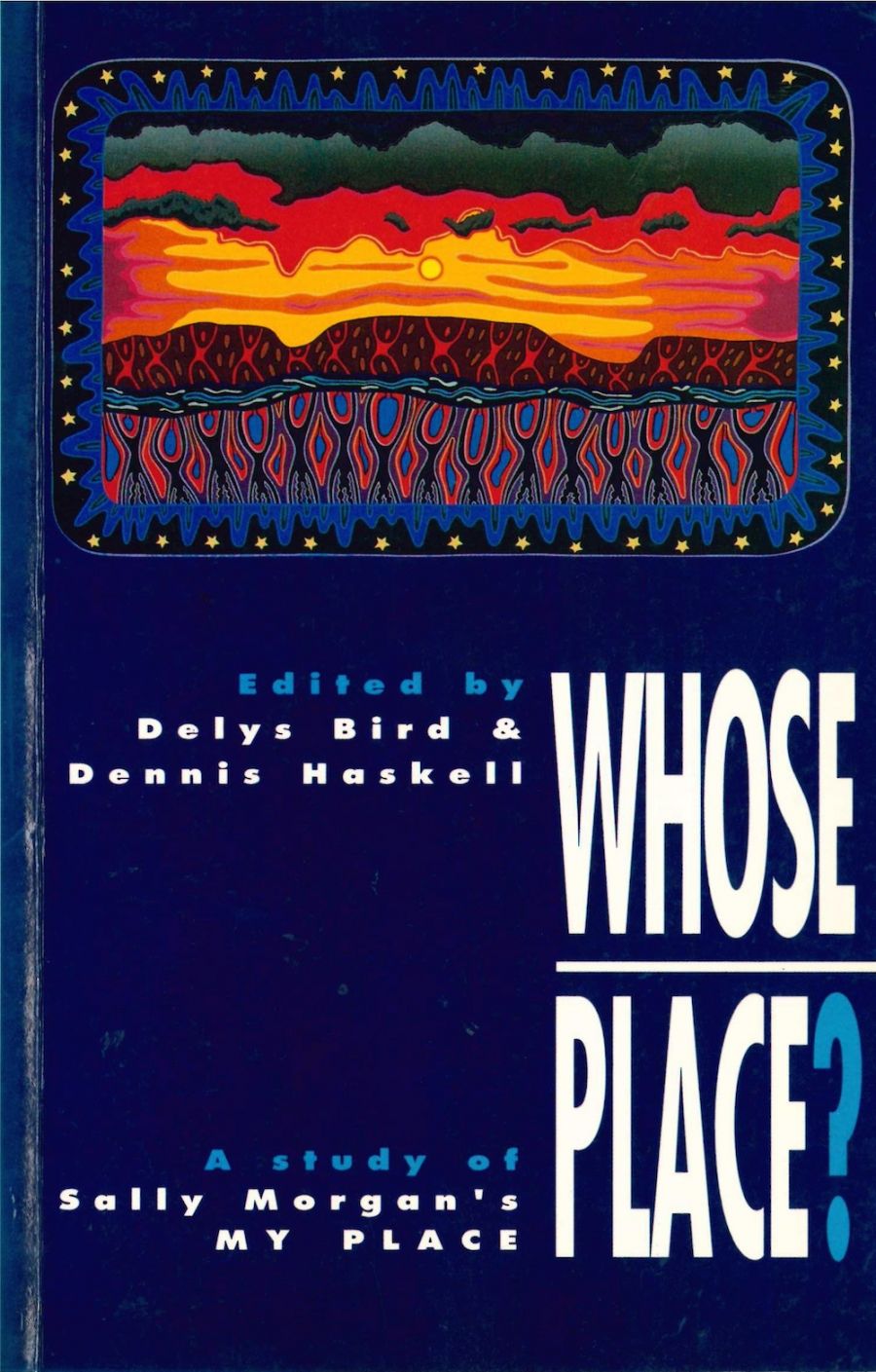
- Free Article: No
- Contents Category: Essay Collection
- Review Article: Yes
- Online Only: No
- Custom Highlight Text:
The first thing to be noted about this collection of essays is that it is aimed at a quite specific market – HSC/VCE students. There is a list of ‘Study Questions’ at the end, and the language of the essays is consistently pitched at an upper secondary school level. Readers who want more complex responses to My Place would be better served by consulting the eclectic bibliography to the text as a starting point.
- Book 1 Title: Whose Place?
- Book 1 Subtitle: A study of Sally Morgan’s My Place
- Book 1 Biblio: Angus & Robertson, $8.95 pb
Angus & Robertson have identified a trend in Australian education – the institutionalisation and expansion of Black Writing courses. My Place is by far the most widely used text in schools and universities, which is understandable given its enormous success, but maybe somewhat regrettable in that it has shaded other books, just as deserving of attention, by other Aboriginal authors.
That said, the complexity of the issues raised by My Place has drawn a wide range of critical response. One school, here represented by the interview with Morgan by the editors, is eager to be as partisan as possible. There’s a slightly cringe-making moment when Morgan is describing what drove her to finish the book:
It was more that than anything else – knowing that, almost being compelled by some supernatural force: if you never do anything else you’ve got to do this, kind of thing …
and Haskell replies:
If we never do anything else we will keep that quote.
Another school wants to treat the text as though it were simply a document of social history (which is one of the things it is). Jody Broun, an Aboriginal commentator, uses My Place as the basis for an angry indictment of government policy which took Aboriginal children away from their families. She’s also angry about dismissive comments about the book by another Aboriginal commentator, Mudrooroo, and that is a repeated theme in other essays.
There’s also an idea, in Fran de Groen’s essay for example, that to speak about the pain of the past is to heal it. This is particularly the case when she’s discussing Morgan pressing her grandmother for details of her past that Nan is reluctant to give. I’m not sure it’s as simple as that – some secrets should be allowed to remain secrets.
The essay I most enjoyed was Joan Newman’s, worth the price of admittance on its own. It suggests the complexities of reading My Place without ever getting above the level of the collection’s projected readership. She points out, quite rightly, that ‘it is important to recognise that My Place is not a transparent documentation of reality, but a highly structured text, adhering to a number of literary conventions’. It’s good that her piece is last in the collection, because it provides a balanced summary of possible approaches to the text.
I’d have liked to have seen some brief notes about the contributors.
Whose Place? will fit very nicely into the niche it is aimed at, and, with careful use, will be helpful in discussions of My Place in schools.


Comments powered by CComment